|
Shooters and hunters in the US are very
fortunate to have a huge selection from which to choose when it
comes to choosing a good, accurate bolt action rifle.
While some lament the passing of older bolt action designs, I do
not, as every worthy design ever built is now available
from some source. Also, bolt guns have lost a little weight over
the past several years, and synthetic stocks are readily
available for most bolt action rifles as well, for those who
prefer their stability over that of wood. Shooters these days
can expect good accuracy from most bolt actions, and in the past
couple of years, even the trigger pulls on most bolt action
designs from several makers have improved significantly. Savage
started the trend with their AccuTrigger,
and other gun manufacturers have followed suit, greatly
improving the trigger action on their rifles.
Recently, I received in for review a new Marlin
XL7 bolt action rifle. There is nothing new or radical about the
XL7, but it combines some of the best features found on
todayís modern bolt guns into a very shootable, reliable,
accurate, and affordable package.
First of all, a bit about the Marlin Firearms
Company. Marlin is one of the oldest and best known firearms
manufacturers in the United States, dating back to the 1870s,
with their reputation built on their legendary lever action
rifles. I have often stated that if I ever get down to owning
just one rifle, it will be one of my Marlin Model 39 leverguns.
Those little .22 Long Rifle shooting jewels are some of the
sweetest shooting rifles and carbines ever inspired by God and
built by man. While it would take some adjusting, I could do
ninety-nine percent of what I need a rifle to do with a Model
39. The other one percent could easily be accomplished with my
Marlin .45-70 Guide Gun. Marlinís entire line of leverguns are
good-shooting, well-built rifles. I get emails pretty often
asking why I do not review new Marlin rifles, along with all the
other guns that I review on Gunblast.com. Since the inception of
Gunblast back in the year 2000, I have tried to talk with the
marketing folks at Marlin, and would get a blank stare in
person, or just an answering machine when I would call. The man
handling that stuff for several years just didnít want to talk
to me. Anyway, there were no hard feelings at all, as he was
doing his job as he thought it should be done. I have bought for
myself and recommended Marlin rifles to Gunblast readers for
years. In addition to their leverguns, their rimfire bolt
action rifles have an excellent reputation for accuracy.
However, a few months ago, Marlin hired a new marketing manager
who is a twenty-first century kind of guy who seems to be really
on top of things, and he actually returns telephone calls. A few
weeks ago when he told me that Marlin was making a new bolt
action rifle, I jumped at the chance to review it. After it
arrived, I was not disappointed. After shooting it, I was
impressed.
While priced to compete with other affordable
bolt guns, the XL7 has several nice features that make it shoot
like rifles costing a lot more. The black synthetic stock is
lightweight, pillar-bedded to the receiver with two Allen-head
bolts, and is comfortable to shoot. The stock wears molded-in
checkering for a secure hold, has a soft, comfortable recoil
pad, and has sling swivel studs attached, which is always a good
idea on a hunting rifle. It bugs me to see many rifles marketed
to hunters that have no provision for attaching a sling.
Thankfully, Marlin chose to put sling swivel studs on the new
XL7. The XL7 received for testing is chambered for the .270
Winchester cartridge, which is a fine choice for just about any
medium to large game in the US, or for hunting plains game in
Africa, with the right bullet. The XL7 weighed in at six pounds,
eleven ounces. The slim tapered barrel is twenty-two inches
long, and the muzzle is finished with a recessed crown. The
barrel is threaded into the receiver, and locked in place with a
Savage-style barrel nut. The rifle balances very well, and comes
to the shoulder quickly. The fast-stepping .270 Winchester
cartridge is a good match for such a rifle. It is very flat
shooting, and can really reach out and hammer medium game like
whitetail deer, without punishing the shooter with heavy recoil.
What recoil the cartridge does produce is abated handily by the
excellent recoil pad that Marlin has installed on the XL7. The
XL7 has an internal box magazine, which holds four rounds,
giving a total loaded capacity of five cartridges. The push feed
design of the bolt head allows an extra cartridge to be fed
directly into the chamber, eliminating the requirement that it
be fed from the magazine. The bolt head is pinned to the bolt
body, much like the system used on the Savage 110 series rifles.
I like that feature. It allows to bolt to self-center, doing
away with the need to have the lugs lapped as is often required
on other designs to improve accuracy. The thumb safety is to the
right rear of the bolt handle, as we have seen on the Remington
Model 700 rifles for many years. It blocks the trigger from
movement, but allows the bolt to be worked. To remove the bolt
for bore-sighting or cleaning, a bolt release is located at the
left rear of the receiver, and is easy to use. Pressing downward
while withdrawing the bolt allows it to slide freely from the
receiver. A red cocking indicator tells the user, by sight or
feel, that the bolt is cocked and ready to fire. One of the best
features of the XL7 is the trigger. Called the Pro-Fire Trigger
by Marlin, it is user adjustable for pull weight, and releases
crisply with no hint of creep or overtravel. It is a fine
trigger. The sample rifle arrived with the pull set to release
at just over three and one-quarter pounds, but I lightened the
pull slightly to two and one-half pounds. Like the Savage
AccuTrigger, the Pro-Fire trigger has a safety inset into the
center of the trigger blade that prevents the rifle from firing
if dropped hard. The result is an excellent trigger pull that is
safe to carry, and easily adjusted. I detest a heavy, gritty
trigger on a rifle. It makes it hard for the shooter to take
advantage of the accuracy of a rifle. The Pro-Fire is a good
system, and Marlin did well incorporating it into the XL7. I
like the trigger.
Shooting the XL7 was a pleasure. As mentioned
earlier, the stock design and recoil pad make the rifle very
comfortable to shoot. The excellent Pro-Fire trigger made
it easy to hold the rifle on target while pressing the trigger
blade. For accuracy testing, I mounted a Leupold VX-L
atop the Marlin using Weaver bases. The Marlin uses any
scope base that is made for the Winchester Model 70, which is a
nice feature, as that base is very common and readily available.
However, during the accuracy testing, I also realized that this
Marlin is priced below just about every other bolt action
centerfire rifle available in the United States. Keeping
that in mind, I mounted a Bushnell 3 to 9 variable
Sportview rifle scope. This scope sells for a very low price. It
is nothing like the quality of the Leupold VX-L, but I realize
that most buyers of the Marlin are not going to pay twice as
much for a scope as they do for the rifle. I also used no
premium or handloaded ammunition in the Marlin. I wanted to see
how this rifle would perform for a hunter using ammunition that
is readily available to everyone. I tested the XL7 for function
and accuracy using the inexpensive and plentiful Remington
yellow and green box Core-Lokt .270 ammo that I purchased from
the Wal Mart. I also tested the XL7 with Federal
150grain round nose ammo that is also commonly available at any
Wal Mart store. None of this ammunition is high priced,
and in the .270 Winchester, premium ammo is not needed, as the
Core-Lokt has probably killed as many animals as any bullet
made, and it still works quite well.
Functioning of the XL7 was very good, with the
cartridges gliding smoothly from magazine to chamber, and
extracting just as easily after firing. Accuracy was fine,
using either of the two scopes tested with the rifle. The
targets were much easier to see clearly with the Leupold, but
the accuracy of the XL7 was the same with either. As can be seen
in the pictures, this rifle preferred the heavier 150 grain
bullets to the 130 grain loads, but even the 130s grouped three
shots into one and five-eighths inches. The 150 grain Remington
grouped into one inch, and would do so every time, all day long.
The Federal ammo grouped almost as well. For deer hunting, a
rifle this accurate is not a necessity, but it is nice to know
that the rifle will shoot into an inch at 100 yards if needed.
While testing the new Marlin, my cousin Jacob
Taylor arrived to help out. I had already sighted in the
XL7, and Jacob was going to take it hunting for a few days, so
he settled down behind the rifle. It was wearing the Bushnell
scope, and he selected a target at 100 yards and squeezed the
trigger. His first shot from the Marlin hit the X of the bull. I
told him there would be no excuses on the deer hunt after that.
If he misses, he canít blame the rifle!
I like accurate rifles. I especially like
accurate rifles that are a real bargain in todayís market. I
usually do not list prices in a review, as our articles stay up
on Gunblast in the Archive section forever, and we are
constantly getting new readers who find our site. In this case,
however, I will make an exception, as this new XL7 carries a
list price, as of this writing, of only $326 US. This price,
combined with the accuracy, comfort, and handling of the rifle,
along with that excellent trigger, makes this new Marlin XL7 one
of the best bargains available in a quality rifle. In addition
to that, it is made in the United States by American skilled
workers. Considering reliability, accuracy, and price, the
Marlin XL7 is hard to beat, and I highly recommend it.
For a look at the entire line of Marlin rifles
and L C Smith shotguns, along with H&R rifles and shotguns,
go to www.marlinfirearms.com.
For the location of a Marlin dealer near you,
click on the DEALER FINDER button at www.lipseys.com.
Jeff Quinn
|
For a list of dealers where you can
buy this gun, go to: |
|

|
|
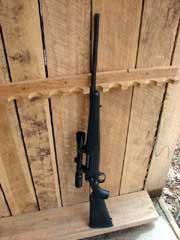
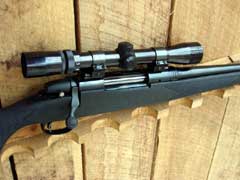
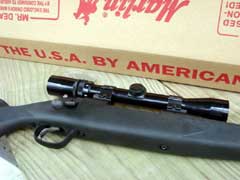

Jacob Taylor assisted in accuracy
testing.
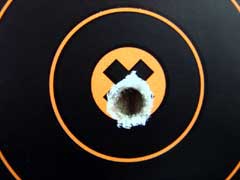
Jacob's first shot demonstrates
that if he misses his deer, it won't be Marlin's fault!
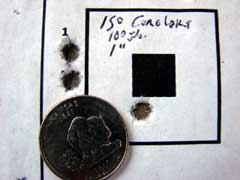
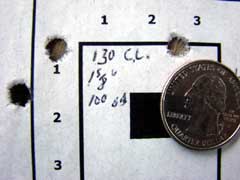
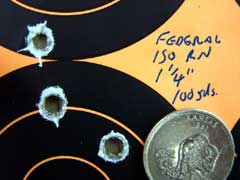
100-yard groups show that the
Marlin XL7 is as accurate as rifles costing several
times its price.

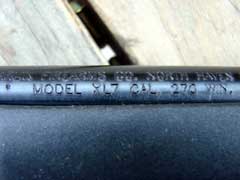
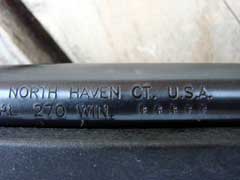
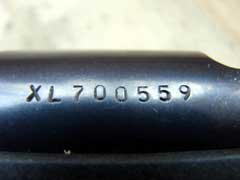
|
  
Got something to say about this article? Want to agree (or
disagree) with it? Click the following link to go to the GUNBlast Feedback Page.
|
|
Click pictures for a larger version.
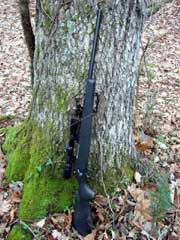
Marlin's new XL7 bolt-action rifle.
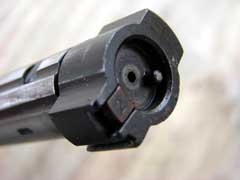
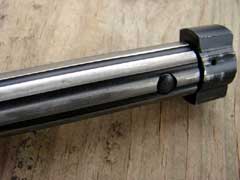
Bolt head is pinned to fluted bolt.
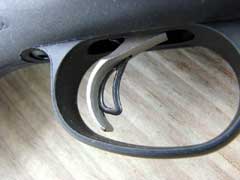
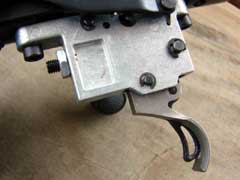
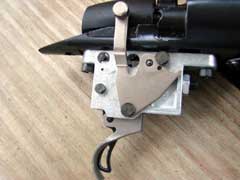
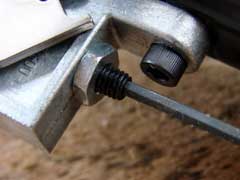
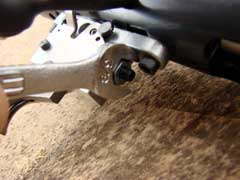
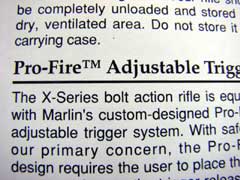
Marlin's Pro-Fire trigger is safe, crisp, and easily
adjustable.
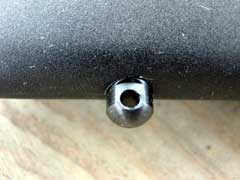
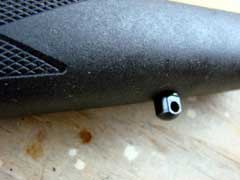
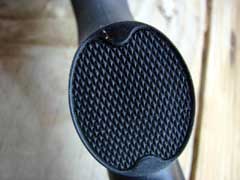

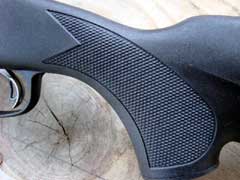
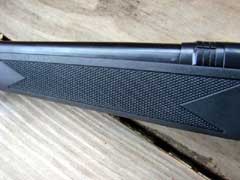
Weather-resistant synthetic stock features checkered
panels and grip cap, swivel studs, and soft recoil pad.
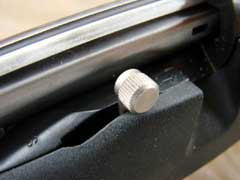
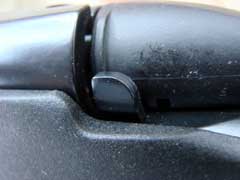
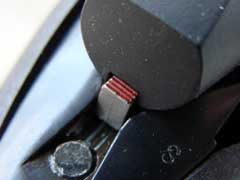
Manual safety (top), bolt release (center), and cocking
indicator (bottom).
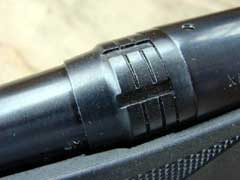
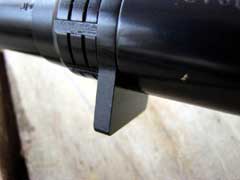
Barrel is attached with a Savage-style barrel nut.
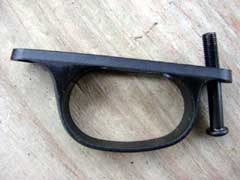
Trigger guard is synthetic to match the stock.
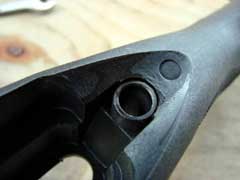
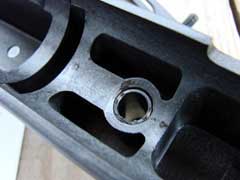
Stock is pillar-bedded to the action.
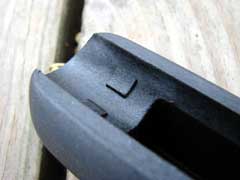
Stock contacts barrel at two points near tip of forend.

The XL7 uses commonly-available Winchester Model 70
scope bases.
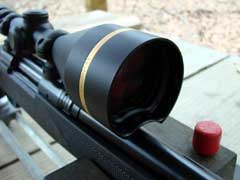
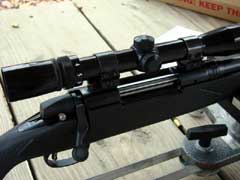
Author accuracy-tested the XL7 using Leupold VX-L (top)
and Bushnell Sportview (bottom) scopes.
|
![]()